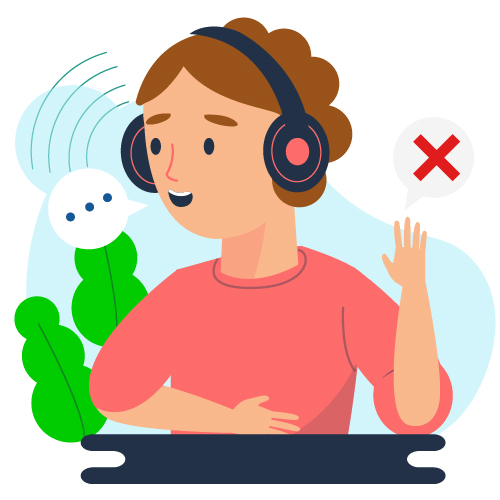
IELTS Reading Tips
How to build on IELTS Reading tips
Using time effectively is the greatest worry in IELTS Reading tips for most candidates. Although it is not a tough nut to crack, most candidates fail to score good bands in this particular module. It is all about the right approach for the right question that matters the most for the test.
The IELTS Reading Academic module expects you to analyze three sections and answer 40 inquiries. You have an hour where to reply, and you can work at your speed. Be that as it may, how long would it be advisable for you to spend perusing, and how long addressing the inquiries? Another essential thing to note here is that there is no separate time given to transfer the answers onto the answer, as in the case of listening in the IELTS test.
These IELTS Reading tips underneath are intended to assist you with utilizing your time. You will be acquainted with some of them, mainly skimming. Others might be new strategies that you haven’t been instructed on previously.
These are the best methodologies for overcoming the sections and addressing every one of the inquiries in IELTS Reading. Attempt them in your next test. Alternatively, you can form your reading strategies by taking several mock tests before the actual test. No strategy can be termed as the best as it varies from question to question and passage to passage.
IELTS Reading Tip 1: Preview the inquiries first
While perusing, your mind strives to make an image of what’s going on with the section. You can save your cerebrum the difficulty by perusing the inquiries rapidly before you begin perusing the section. The inquiries furnish you with a framework of the items in the section, which then, at that point, permits you to peruse all the more rapidly because you know what’s in store. Don’t be enticed to begin addressing the inquiries quickly without setting aside some margin to skim-read the section.
IELTS Reading Tip 2: Read the presentation first, end straightaway, body last
You can begin the actual section in the wake of seeing the inquiries. We suggest spending something like five minutes on this stage. What is the most effective way to move toward entry? I recommend you read the presentation first and skirt the body to peruse the end afterwards. The guideline is equivalent to Tip #1. It’s simpler to peruse the body when you know where it’s going ahead of time. However long you’ve perused both the presentation and the end, perusing all passages in the body is not fundamental.
IELTS Reading Tip 3: Don’t peruse each sentence
My next IELTS Reading tip is essentially about skimming. Skimming is when you read a text rapidly to get the overall thought. First, however, how does skim-perusing work? One method is to keep your eyes pushing ahead and avoid ‘back skipping’ when you observe a word you don’t have the foggiest idea. Another strategy is to search for primary thoughts, which are usually close to each new passage’s start. Then, you don’t have to peruse the supporting sentences whenever you’ve observed this thought. Instead, a quick look at the last sentence can assist you with affirming, assuming that the principal thought was the right one.
IELTS Reading Tip 4: Underline explicit data
This next tip is connected with examining. However, it’s something you can do while perusing and before you begin responding to the inquiries. If you track down an individual’s name, spot or association, underline it. These names will more likely show up in the inquiries, and you’ll be looking for them later. That is additionally the situation for specialized terms, which ordinarily accompany a definition in the text. You can save time by performing multiple tasks and denoting these words for later reference. Different words that aren’t as unambiguous will most likely be summarized in the inquiries.
IELTS Reading Tip 5: Spend something like one moment for each inquiry
This last IELTS Reading tip is the same as another tip I gave you about IELTS Listening. 30 out of 40 correct responses are sufficient to get Band 7, a decent score in the two segments. You should deal with your time successfully and endeavour each of the 40 inquiries, including the 30 least demanding ones. You would rather not squander a few minutes or favour an extreme inquiry which may be the distinction somewhere in the range of 8.5 and 9.0. Ensure you don’t use up all available time by spending one moment on each inquiry. You can generally return toward the end and tackle the truly troublesome ones once more.
IELTS Academic Test – Reading Section
The Academic Test is for wannabes hoping to seek their advanced education at a University in an English-talking country. It is the harder one out of the two kinds of the IELTS because it tests the competitor’s scientific, decisive reasoning and perusing abilities at a college level. In addition, it evaluates whether you will want to stay aware of the coursework and can convey your thoughts.
There are 3 long, point by point entries for perusing, taken from different sources from scholarly texts and distributions to papers and magazines. These entries are at a college level and require a higher request of thought contrasted with the General Test.
IELTS General Test – Reading Section
This rendition of the IELTS is expected for those hoping to seek after their optional schooling, gain work insight, or partake in specific preparation programs. It might likewise be essential to anybody hoping to move.
Dissimilar to the Academic Test, the IELTS General Test doesn’t test your higher request thinking abilities or essential thinking at a college level. Instead, it evaluates your degree of correspondence and essential cognizance that fills the need for endurance and correspondence in another climate where the vehicle of correspondence is English.
Usually, the sources that are picked for the entries and errands inside the General Test are the sort that you can hope to come into contact with consistently, for example, – promotions, organization handbooks, papers, books, and magazines.
Here, there are 3 areas inside the Reading Section.
Social Survival
You will be given at least 2 short yet pressed texts which contain a great deal of data. These are texts that you will experience on an ordinary premise.
Preparing Survival:
You will be given 2 texts containing college or association data.
General Reading:
The keep going segment includes 1 long text, which tries to test essential understanding perception.
That closes the distinctions between the Reading Sections of the Academic Test and the General Test, by and large.



